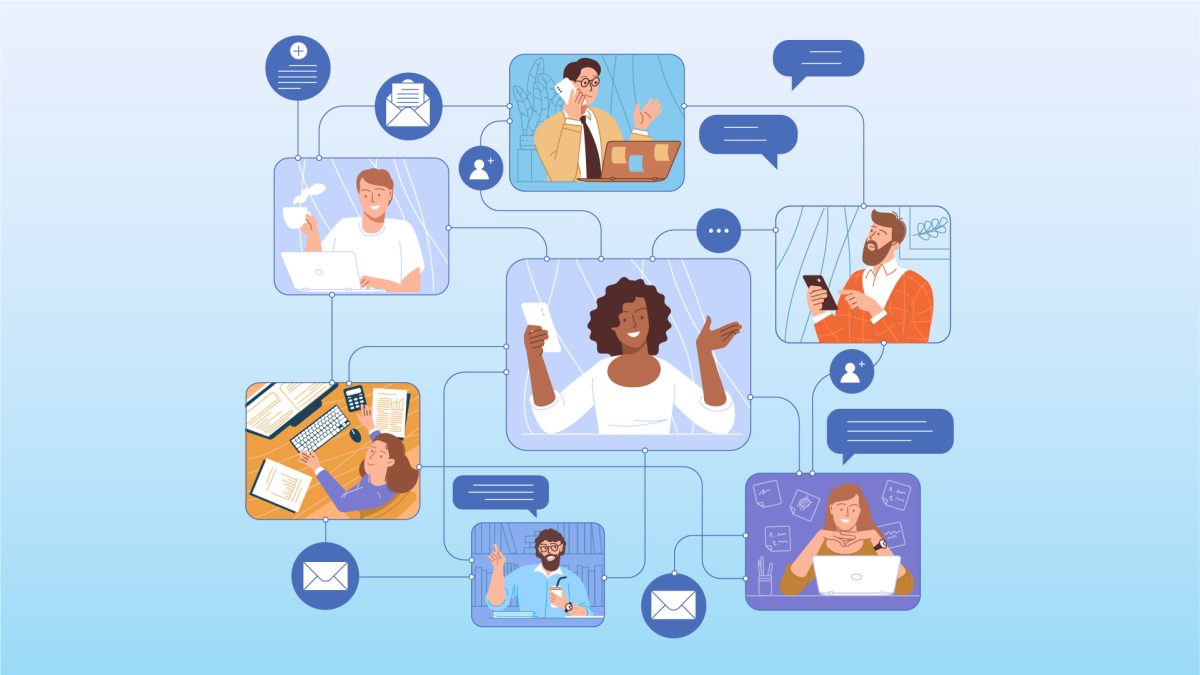Everything transformed as the epidemic struck the world, including the education sector. The development of e-learning is a significant transformation that happened to our education system. Although it was there before the pandemic, the coronavirus was mainly responsible for its growth. This is why electronic learning, often known as e-learning, is gaining in popularity as the need for flexibility and convenience in education is growing.
E-learning has the benefit of allowing students to study whenever they want, from wherever they want, and at their own speed. Even those who are physically unable or shy can more easily access education. Even if e-learning is practical, it could be challenging to keep students interested and motivated. E-learning generally lacks the responsibility and social connection that keep students on task when compared to traditional classroom environments. This is why the success of online education depends on having interesting e-learning content. It helps maintain attention, improve memory retention, and increase learning satisfaction.
When generating interesting e-learning content, animated movies may be a crucial component. Animated movies may hold students’ attention and improve their learning experience by utilizing images, animations, and narration. Learners are more likely to finish the course, retain the material, and apply it to actual circumstances when they are interested and involved in the course material.
The benefits of animated videos in e-learning
For e-learning, animated movies provide a number of advantages, such as expanded accessibility and inclusion, improved engagement and retention, and simplified complicated topics. You may improve the learning experience for your students and support them in more successfully achieving their learning objectives by including animated films in your e-learning content.

Improved engagement and retention
The aesthetic appeal and entertainment value of animated videos may draw viewers in and keep them interested in the subject matter. In e-learning, where students may be more easily distracted or have a shorter attention span, this is particularly crucial. You can make text-based information less monotonous and make learning more lively and interesting by adding animation. In addition, studies have shown that when compared to conventional text-based learning, animated movies can increase information retention by up to 15%.
Increased accessibility and inclusivity
E-learning may be improved by using animated videos by making them more inclusive and accessible. For instance, animated films with subtitles or captions might be helpful for students with hearing difficulties. Additionally, when complicated ideas are illustrated by animation, learners with visual impairments could find it simpler to comprehend them. You can guarantee that all students have equal access to the material and the freedom to learn at their own speed by utilizing animated movies.
Simplified complex concepts
Animated animations are very useful for demystifying complicated ideas that are hard to comprehend through text alone. It is simpler for learners to understand the big picture when difficult topics are broken down into smaller, easier-to-digest bits utilizing animation. Animation may also assist students in understanding how various parts work together and aid them in visualizing complex topics. For students who are unfamiliar with the subject or have little prior understanding, this can be extremely helpful.
Enhanced creativity and storytelling
Animations provide tons of creative opportunities that can enhance the appeal and retention of e-learning materials. For instance, you may employ animation to develop characters, locations, and events that help learners relate to the topic better. Animation may also be utilized to express comedy and emotion, which can enhance learning and increase the probability that students will retain the information.
Consistent quality and branding
Animated films may aid in ensuring that the e-learning material is of a high standard and that your brand is represented consistently. You can produce a unified and expert-looking learning experience that strengthens your brand identification by employing the same animation style and graphic components throughout the course. Additionally, employing animated videos allows you to keep the visual quality of your content at a high level, which may assist to boost your course’s legitimacy and raise student engagement.
Examples of successful use of animated videos in e-learning
These are just a few illustrations of the efficient usage of animated films in e-learning. Companies and organizations may develop successful training products that engage learners and help them apply what they have learned to real-world circumstances by employing animation.
Khan Academy
Anyone can get free online education from Khan Academy, a nonprofit educational institution. To make difficult ideas more understandable and appealing, they employ animated films. Their films span a wide range of topics, including humanities, social sciences, and arithmetic.
Duolingo
Duolingo is a language-learning program that uses gamification and an interactive style of teaching to make language learning more interesting and engaging. They also employ animated animations to teach grammar and vocabulary in context, allowing students to better comprehend the language and how it is used.
TED-Ed
TED-Ed is an educational initiative from the TED conference that produces animated videos on a variety of educational topics on YouTube. Their videos use storytelling and animation to make complex ideas more accessible and interesting, and they often feature expert educators as narrators. Learners can gather a lot of knowledge about complex topics through it.
McDonald’s
McDonald’s is a multinational fast-food corporation that employs animated films to teach its employees. Food safety, customer service, and managerial abilities are among the themes covered in their films. McDonald’s is able to provide consistent, high-quality training to employees all across the world by employing animated movies.
IBM
IBM used animated movies in its staff training programs to clarify complicated technological topics and procedures. Their movies employ visual metaphors and animations to make the material more interesting and understandable.
How to create effective animated videos for e-learning
Creating effective animated videos for e-learning requires careful planning and execution. Here are some tips to help you create engaging and effective animated videos:
It is critical to make the messaging concise and clear while making animated videos for e-learning. Avoid using technical jargon or sophisticated terminology that may be confusing to students. Instead, concentrate on simplifying difficult topics into basic, understandable language that learners can connect to.
Collaboration between subject matter experts and animators is required for effective animated videos. Subject matter experts may give the video the necessary substance and context, while animators can bring the subject to life through animation. Collaboration ensures that the video effectively conveys the material while also engaging learners.
Quizzes, simulations, and games that are interactive can help keep students interested and motivated. Learners may actively engage in the learning process and evaluate their knowledge as they go by introducing interactive features into the animated film.
Choosing the right animation style and techniques is essential when developing an animated video for e-learning. The animation style should correspond to the video’s tone and substance, and the techniques utilized should improve the learning experience. Using pictures to depict abstract topics, for example, might make them simpler to learn and recall.
Wrapping Up
The usage of animated videos in e-learning has grown in popularity in recent years due to their capacity to improve student’s learning experiences. Animated videos may attract learners’ attention and make the learning experience more entertaining and memorable by adding graphics, animations, and storytelling. This is especially crucial in online education, where engagement and motivation can be difficult to achieve. Learners are more likely to complete courses, retain material, and apply it to real-world situations when engaging e-learning content, such as animated films, is used. Companies and organizations in a variety of industries have seen success with animated videos in e-learning, and by adhering to best practices such as clear messaging, a collaboration between subject matter experts and animators, the incorporation of interactive elements, and appropriate animation styles and techniques, you can create engaging and effective animated videos that help learners achieve their educational goals.



